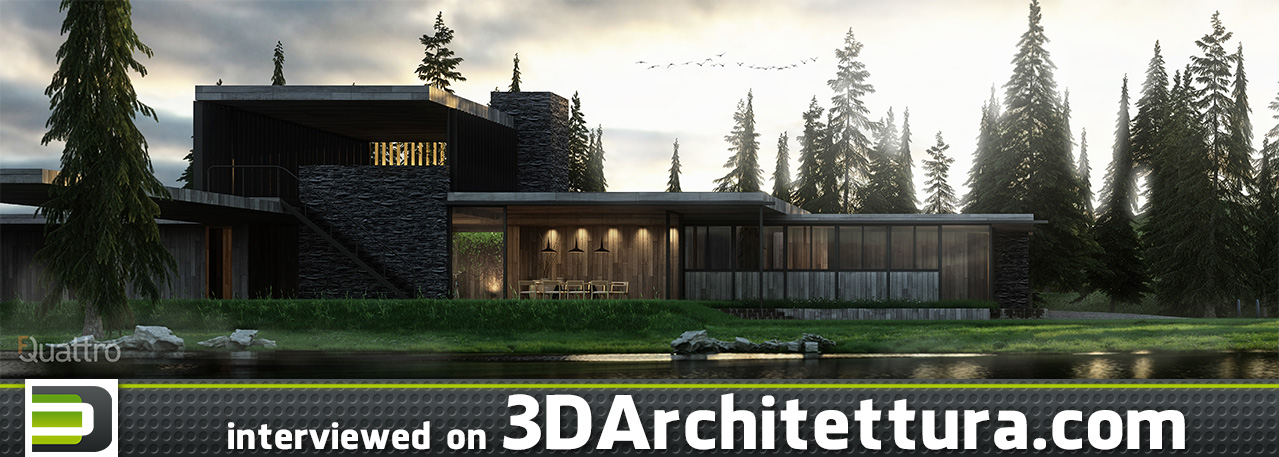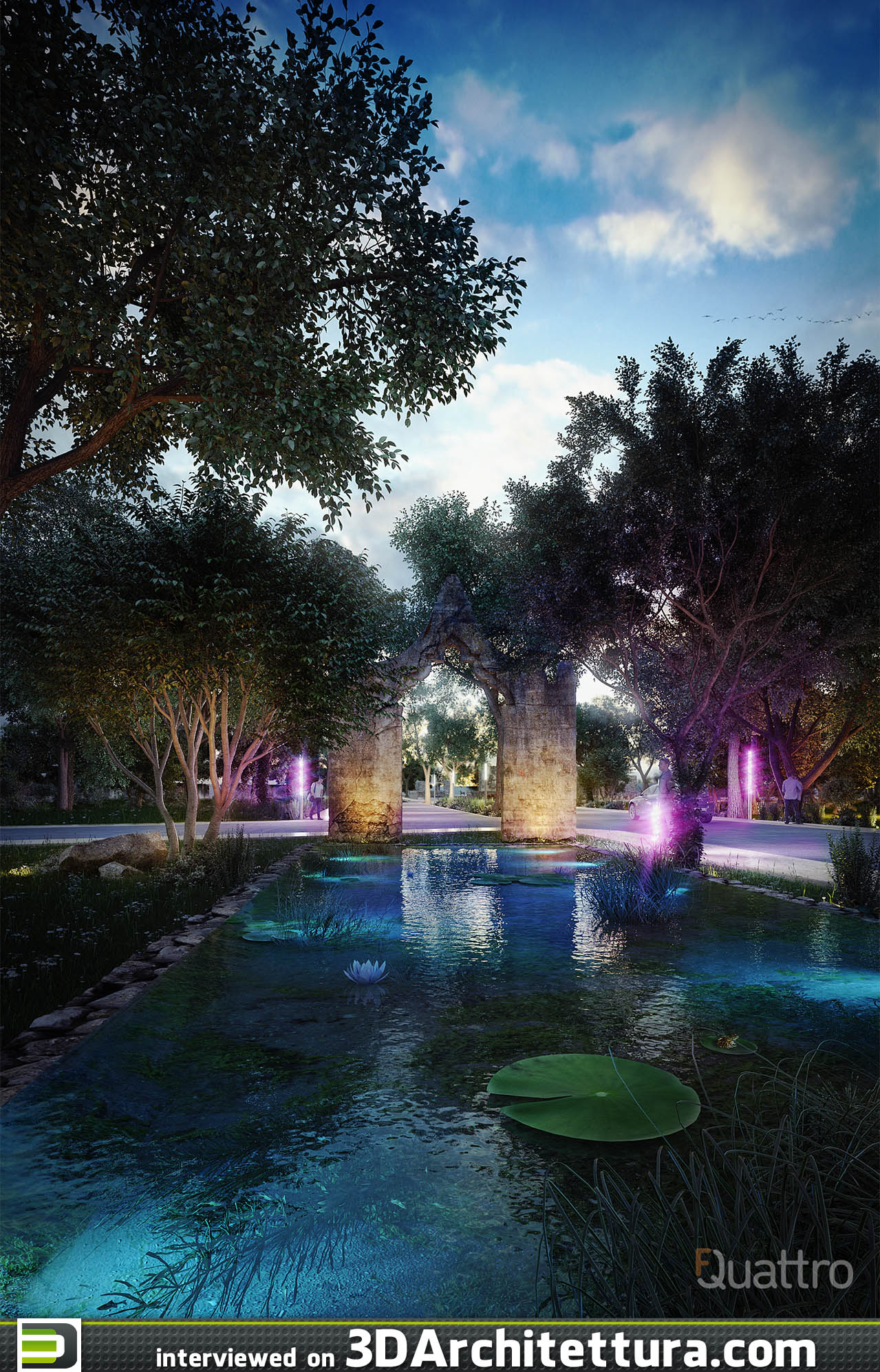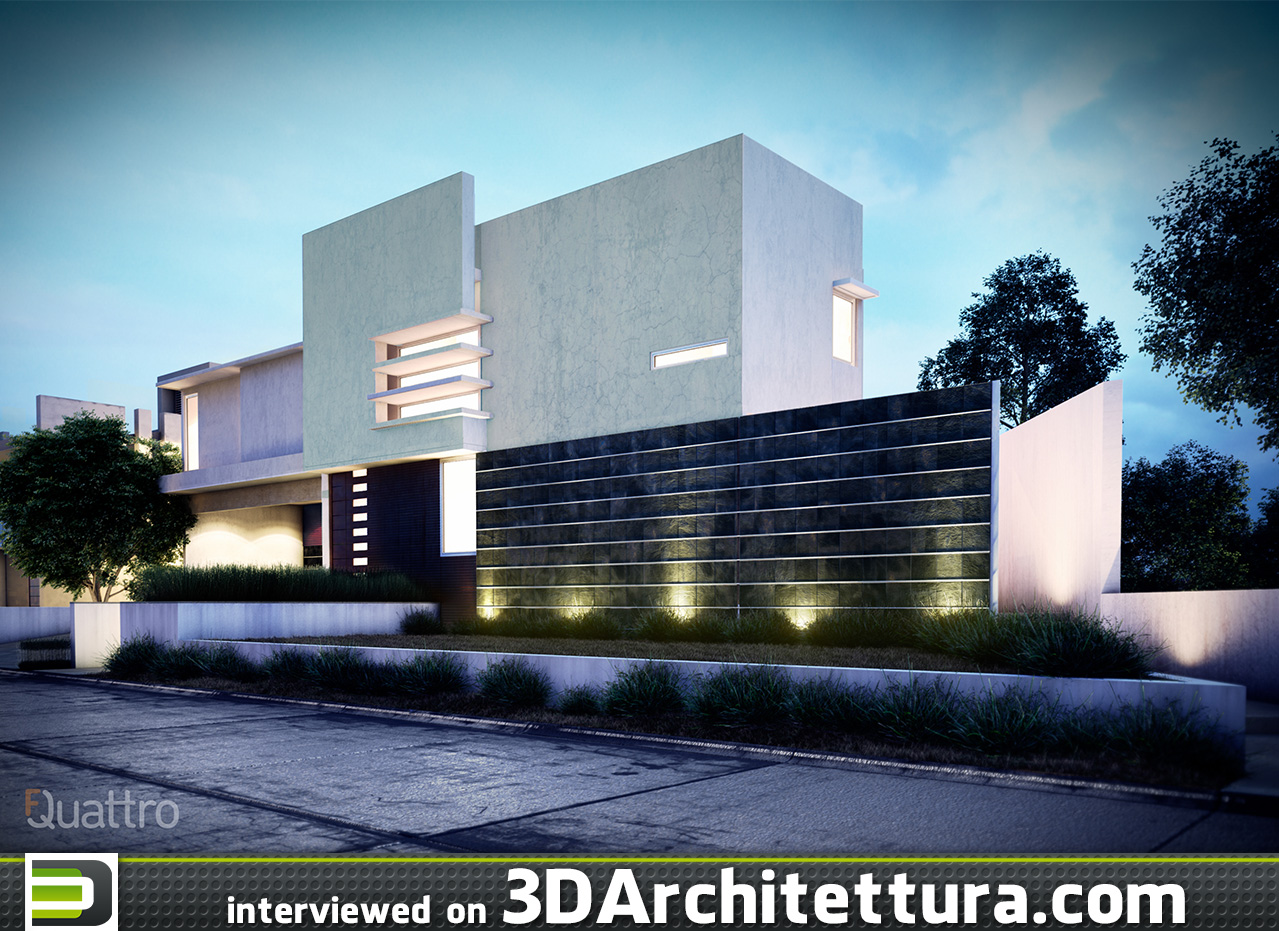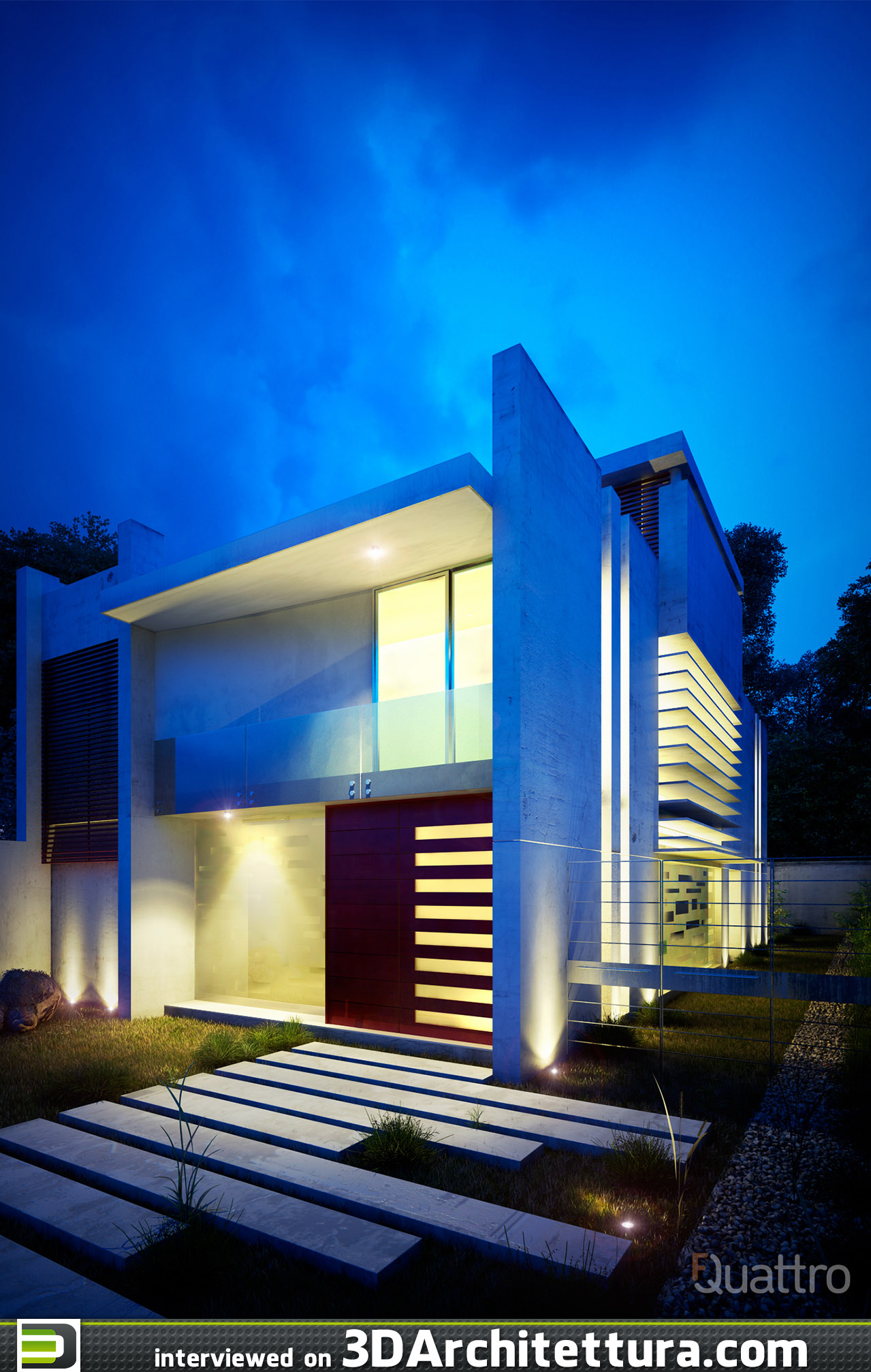Analyze distance to vegetation on your render and real necessity for detailed materials – this way you shorten rendering time.
Ana Laura Franco & Gerardo Lujano
Country: México
Age: 26 & 28
Job: FQuattro Founders
Website: www.f-quattro.com
SocialMedia: www.facebook.com/FQuattro-1604029196549317
ABOUT STARTING CAREER IN 3D
Ana Laura: I studied architecture at the Marist University of Merida, from the second year of college I learned modeling in AutoCAD and from that moment I knew I wanted to do this my whole life. I always loved drawing and when I learned that I could put my ideas and projects yet more detailed and view 3D – I had no doubt this was for me. I spent about seven years doing renderings and I think there is nothing that makes me happier than this.
ABOUT USUAL WORKFLOW
Gerardo: Our workflow consists primarily of the modeling stage (seeing that everything is as detailed as possible), the setting stage (the focus is not only the furniture, but also the greenery and the contrasts between cold and warm and between lights and shadows are very important to create the look), the realization stage (we check and set lighting and materials) and finally the stage of postproduction. The modeling part is handled by our co-workers. We use 3dsmax, vray and photoshop and among plugins: forest pack pro, MultiScatter, floor generator, multitexture, among others.
ABOUT SETTING THE LIGHTS AND MATERIALS
Ana Laura: The most important thing for us is to be sure that there is always a set of interesting shadows and the customer can have an easy understanding of the depths of space and of the elements contained in the draft.
Personally, the most important part when making a render is lighting. With various tests one can easily notice how the project is changing and taking shape, so I recommend to make many test renders playing with different light temperatures, focal points and creating interesting shadows in spaces. As for materials, you have to have a good understanding of these as an “advanced” material is not necessary for the image look realistic, if you previously performed a good balance of light I consider that the materials are much easier to perform.
Something that helps me a lot are the references – to take several architects projects, an interesting picture or some detail and try to imitate the complete picture. There is no better way to learn than practicing this every day, see how the lighting works in space, where the points of lights are located and finally how to achieve materials.
ABOUT CREATING PLANTS
Ana Laura: We create vegetation with some plugins, like forest itoo. It’s a good tool to get a more photorealistic vegetation.
We also use ivygenerator to create vines, changing the material of the leaves and making various types of vines hanging from the project we’re doing.
Really important in vegetation are the materials – usually, as mentioned above, a material with too much information such as the subdivs and reflexes is not necessary: what I recommend is first to analyze the distance you have till vegetation and if really it needs to be very detailed, because at this point you can shorten time for rendering.
ABOUT FUTURE PLANS
Ana Laura and Gerardo: For the future we seek to expand our services outside Mexico and implement new technologies that are emerging in the archviz such as tours and virtual models, the drones and the use of cloud rendering.
We would like to be recognized as one of the best rendering companies in Mexico and to continue participating in international competitions, to continue growing our team and sharing with them the knowledge we have acquired over the years in 3D industry.
This field is growing quickly so we have to be at the forefront at all times updated and keep learning new techniques.

 Russian
Russian


























